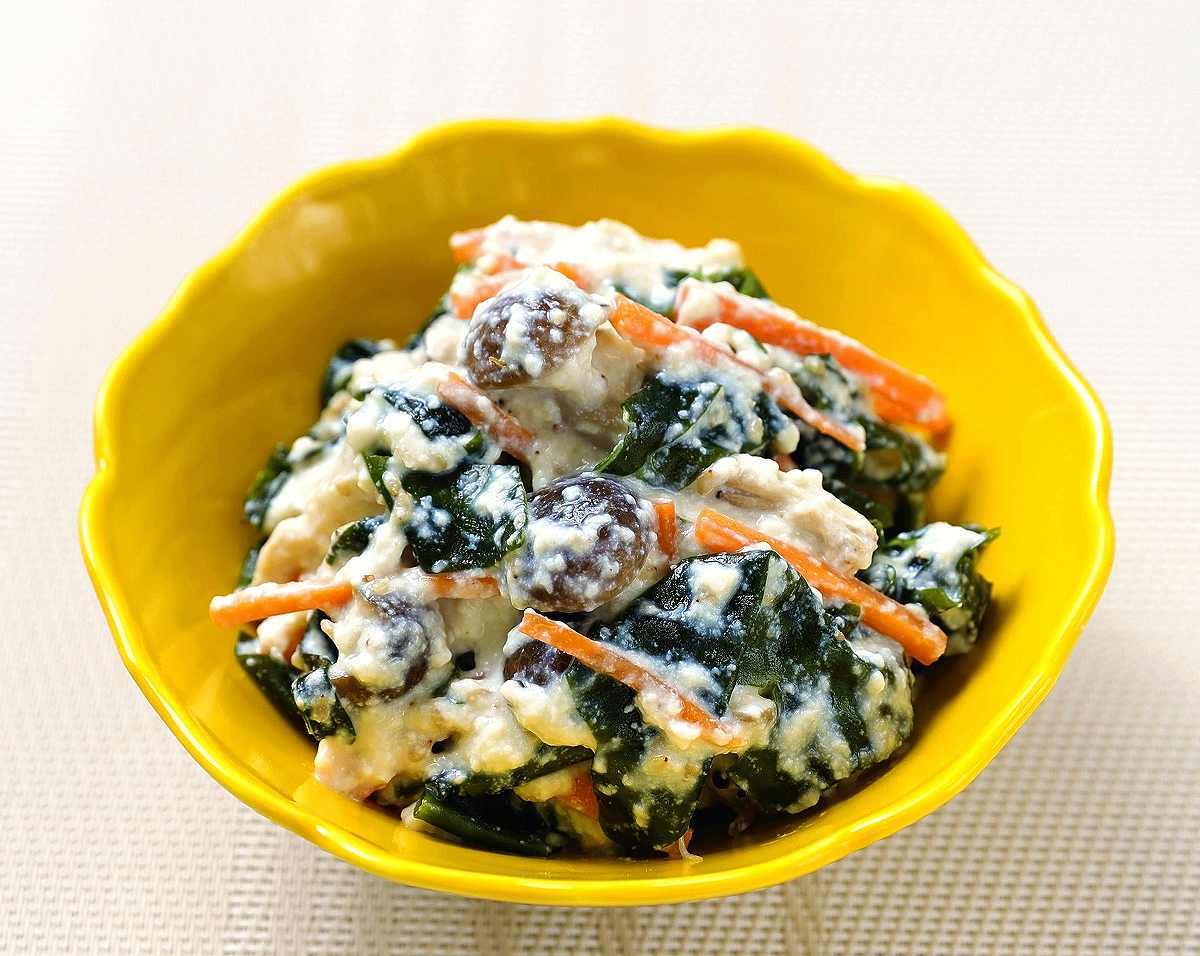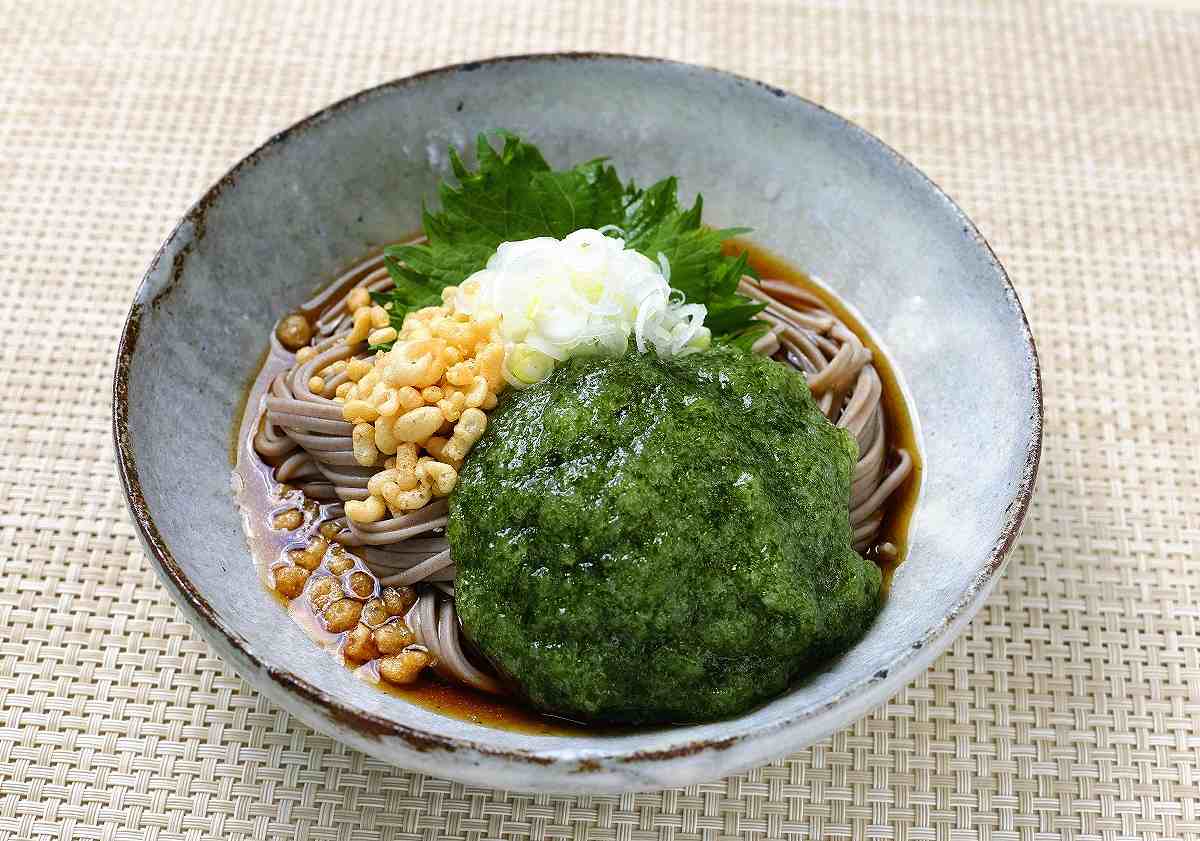Dried Wakame Seaweed Provides Variety of Flexible Dish Options; Mineral-Rich Food can Give Relief During Japan’s Sweaty Summers

Wakame shira-ae
12:00 JST, August 25, 2024
Wakame seaweed is a mineral-rich food that you want to eat regularly during the sweaty summer season. The dried variety is easy to rehydrate but is mainly added to miso soup or vinegar-based side dishes. In this article, we will explore other ways to make use of it.
During the hot season, minerals such as potassium are discharged from the body along with sweat. This can trigger symptoms of summer fatigue such as lethargy and loss of appetite. Wakame is rich in minerals and dietary fiber such as alginic acid — the main component of the slimy texture — and is said to relieve intestinal ailments.
“[Dried wakame] can be used in a wide variety of dishes,” said Ayumi Uchida of Riken Vitamin Co., a Tokyo-based food maker that sells dried wakame products. Uchida is involved in developing dishes that use the company’s products.
Uchida recommends using wakame in a salad called shira-ae, which takes advantage of the dried wakame’s ability to absorb water to return to its original state. The dried seaweed is put into a plastic bag along with tofu and other ingredients and rehydrates itself by absorbing liquid from the tofu. This saves the time and effort spent rehydrating the wakame and draining the tofu. The salad is easy to make and the bag can be stored flat so it takes up less space in a refrigerator. The wakame has a firm texture and the mashed tofu is soft and smooth.
Making paste
Wakame seaweed paste can be used in a variety of ways. Uchida recommends making a large amount and storing it in the freezer, using an ice cube tray to divide it into small portions so the paste can be used as needed. “The viscosity of seaweed can be used to thicken dishes or as a binding agent” she said.
Uchida introduces a soba noodle dish topped with wakame paste, which is perfect for summer. The viscous wakame paste captures the juice of grated daikon radish, keeping the dish from becoming soggy and leaving it with a smooth texture. The mixture blends well with both soba and mentsuyu noodle soup.
“Wakame is rich in nutrients and has a wide range of uses,” Uchida said. “We hope that you will use it more in your dishes.”
***
Wakame shira-ae
Ingredients (Serves 2):
- 4 grams dried wakame
- 150 grams kinugoshi soft tofu
- 60 grams shimeji mushrooms (stem ends removed)
- 20 grams julienned carrot
- 1 tbsp ground white sesame seeds
- 40 grams wakame paste
- 160 grams boiled soba
- 100 grams grated daikon
- 150 milliliters straight mentsuyu (noodle soup)
- 1 green shiso perilla leaf
- Agedama tempura crumbs to taste
- Chopped green onions to taste
Directions:
1. Put the dried wakame seaweed, kinugoshi soft tofu, ground white sesame seeds and ½ tablespoon each of light soy sauce and sugar into a food storage bag. Remove air from bag while closing it, then carefully squeeze the contents.

Put dried wakame seaweed and tofu into a storage bag and knead.
2. After the tofu is mashed and seasonings are mixed, leave the bag in a refrigerator until the wakame is rehydrated, about 15 minutes.
3. Put the julienned carrots and shimeji mushrooms on a baking dish, loosely cover the dish with plastic wrap and microwave at 600W for 1 minute. Cool and drain.
4. Check the wakame in the fridge. If it has rehydrated, take the bag out and mix in the carrot and shimeji.
***
Wakame and grated daikon soba

Soba topped with wakame paste mixed with grated daikon
Ingredients (Serves 1):
Directions:
1. To make wakame paste, rehydrate 8 grams of dried wakame in water and drain well. Heat 200 milliliters of water to about 90 C. Pour it into a food processor and add the rehydrated wakame. Blend evenly until the wakame completely loses its shape. This creates about 300 grams of paste.
"Features" POPULAR ARTICLE
-

Sanrio to Open Museum in Yamanashi Pref. Dedicated to Founder, Exhibits Include Hello Kitty, Other Characters
-

Autumn Foliage Surrounds Visitors to Tokyo’s Showa Kinen Park
-

My Daughter No Longer Speaks to Me, But I Want to See Her and My Grandchild
-

Kumamoto: Public Bath Refurbished as Library Where You Can Chat, Take Photos
-

Frozen Vegetables: Demand Rises for Convenient, Tasty Domestic Produce
JN ACCESS RANKING
-

Tokyo Economic Security Forum to Hold Inaugural Meeting Amid Tense Global Environment
-

Keidanren Chairman Yoshinobu Tsutsui Visits Kashiwazaki-Kariwa Nuclear Power Plant; Inspects New Emergency Safety System
-

Imports of Rare Earths from China Facing Delays, May Be Caused by Deterioration of Japan-China Relations
-

University of Tokyo Professor Discusses Japanese Economic Security in Interview Ahead of Forum
-

Japan Pulls out of Vietnam Nuclear Project, Complicating Hanoi’s Power Plans


























